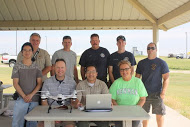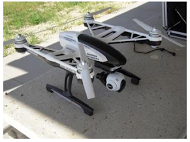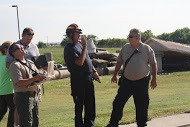Charles Le started attending Newman University in August 2013 to pursue a graduate degree, mainly to enhance his knowledge but also to support his son who was, and still is, an undergraduate student at Newman.
John Turner began his grad school journey in January 2014 and met Le while taking classes during the first cohort of Newman’s Master of Education Organizational Leadership program.
When they started, little did they know they would end up collaborating on something that could potentially save the lives of Kansans.
The two men came to Newman with very different backgrounds. Le is a design engineer at Textron Aviation and Turner is a battalion chief in the Wichita Fire Department.
Part of the program is a capstone project which requires students to apply their learned theory and knowledge in a real-world environment in ways that would benefit individuals or an organization.
Le knew right away what he wanted for the focus of his capstone. “It didn’t take long for me to come up with a theme on an UAV (Unmanned Aerial Vehicle) related study,” Le said.

As he worked on his project, “The Use of Drones to Assist Fire Departments in Situational Assessment,” Le found a valuable resource in Turner.
“I came to John many times for advice on processes and procedures to plan ahead for my study,” Le said.
After a suggestion by Director of Graduate Education Gina Marx, Ed.D, the two men combined their efforts.
“I was working on a drone research project involving the fire service and Charles was working on a project involving drones and hazardous materials. Dr. Marx made the connection to collaborate on a much bigger vision for both of our projects using the expertise in our careers,” Turner said.
“Watching the blending of Charles Le’s mechanical engineering mind and John Turner’s knowledge of fire safety has been amazing,” Marx said. “The networking and combination of expertise is making a transformational difference – which is the purpose of Newman University.”
The duo received approval to use Crisis City, a state training complex operated by the Kansas Emergency Management near Salina, to conduct their research and conducted their experiments July 18.
“It was a big step since we can make comparisons to other disaster exercises that have been conducted (at Crisis City) in the past,” Turner said. “With the cooperation of the Salina Fire Department and some volunteers from another area fire department we were able to gain excellent feedback.”
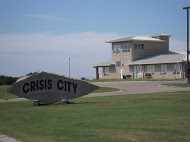
Le and Turner conducted the disaster simulation with the assistance of a ground-controlled drone. “The result data were phenomenal! For example, the drone was able to spot and verify a hidden mannequin out in the grass field within two minutes from takeoff,” Le said.
The same search would normally take search and rescue personnel much longer to successfully complete, according to Le and Turner. A drone’s potential to help first responders assess emergency situations quickly has important applications that could save valuable time and lives.
“This study proved that a drone can be a useful tool in search and rescue missions and a lot of potential applications that have not been addressed,” Le added.
Turner believes their research is the first of its kind for the rescue world. Since their project was self-funded with a limited budget, the drone was equipped only with a GoPro camera. However, he sees many more applications of the UAV technology, such as chemical sensors and GPS.
“It could go way beyond what we tested,” Turner said. “There are so many ways this technology could help emergency response and support agencies.”

Even though budget limited their testing of additional technologies, it did help the two understand the minimum requirements for the aircraft.
Since their initial testing, Le and Turner have made other presentations of their findings. They say there is interest from Kansas fire departments in implementing drones. The next step comes when the FAA looks at public sector licensing in September.
“Watching the Organizational Leadership students’ confidence and learning grow has been one of the most rewarding experiences in my career,” Marx said. “Charles and Turner may well change the way the Wichita and Salina Fire Departments do business in the near future, supporting their hypothesis that drone assisted situational assessment will be more efficient and potentially be safer for first responders and even save lives, and costs of personnel. I’m so proud of these guys!”
Le and Turner plan to continue with their project, including potentially helping local organizations in training and implementation of UAV technology.
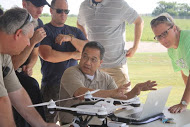
For the duo, the experience of their master’s education program has been far more than they ever expected.
“My journey at Newman has been a life-changing experience…I came to Newman to pursue a master’s degree and I received more than I expected. The program staff offered amazing professionalism and in-depth knowledge. I feel blessed to be part of this program and especially under the guidance of Dr. Gina Marx,” Le said.
Since finishing the capstone, Le received a promotion at work. He was elevated to senior engineer status and credits the Organizational Leadership program with helping his career.
Click below to watch video from the drone camera used during the testing and research done at Crisis City.

